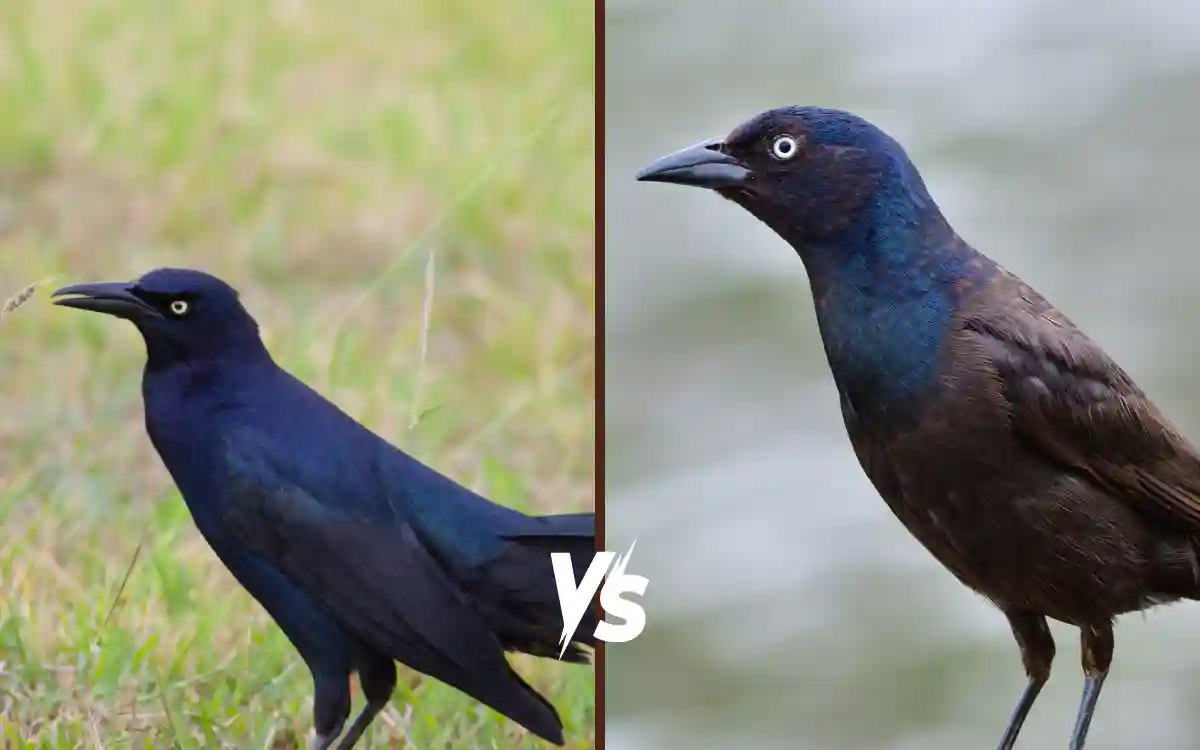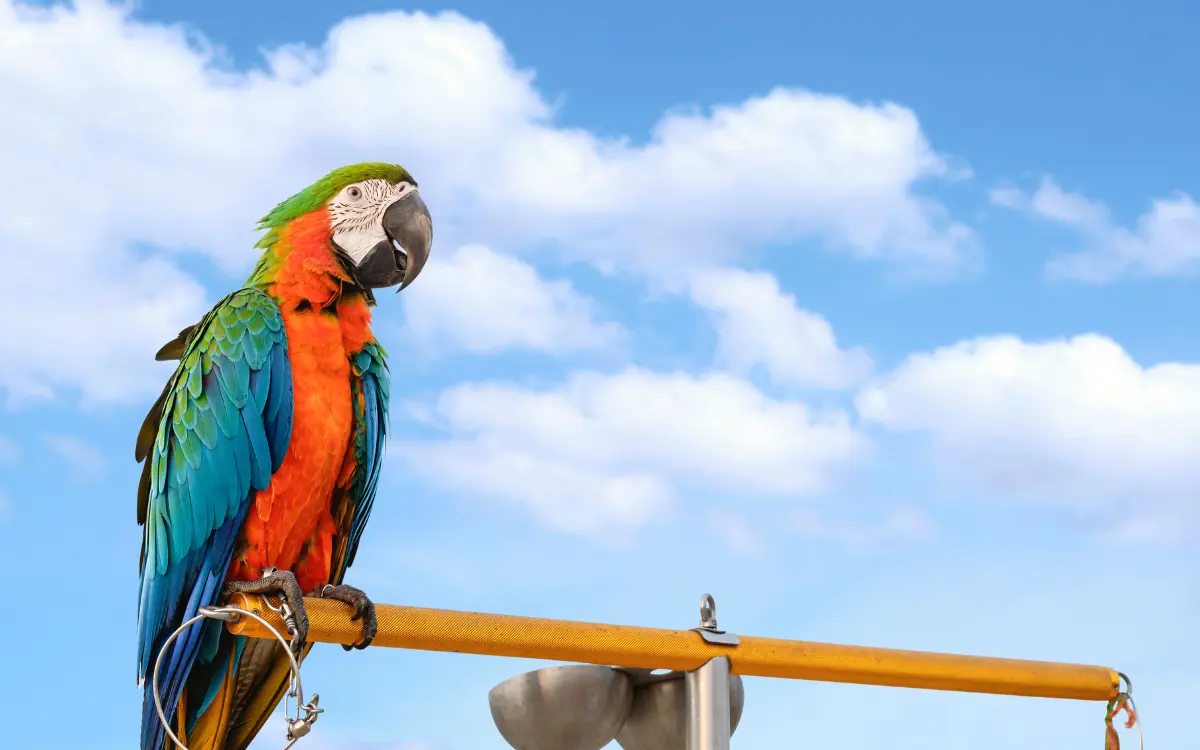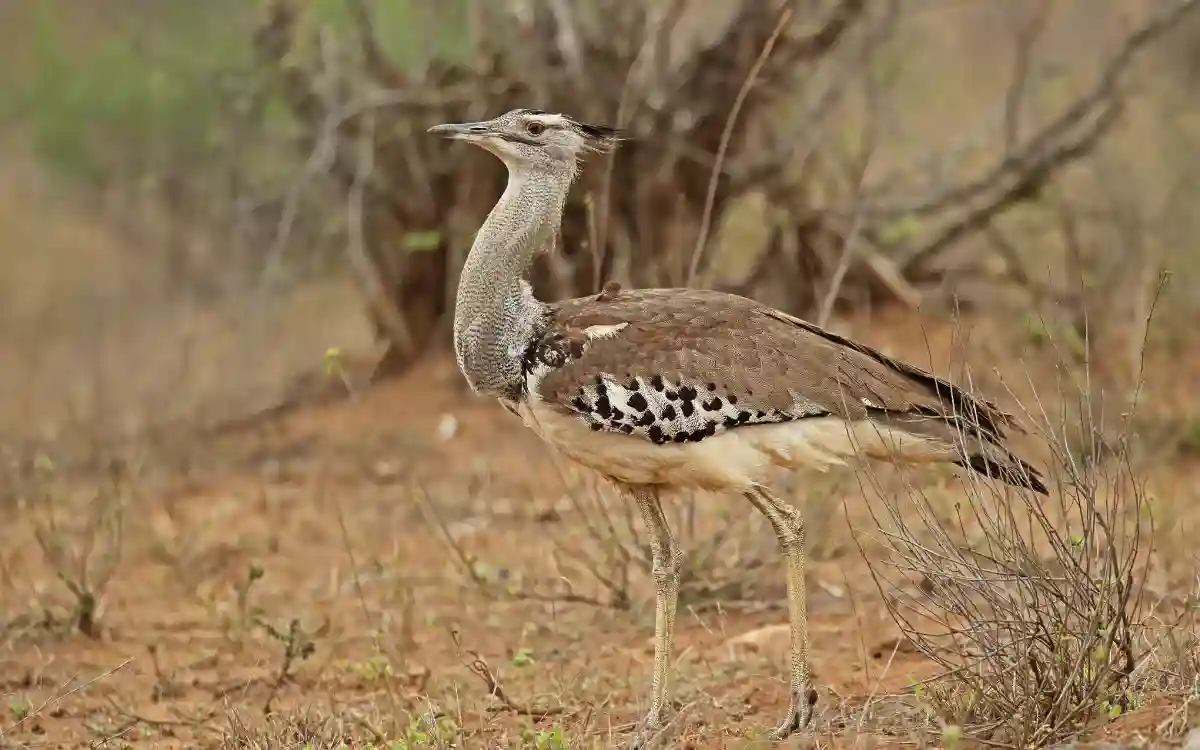25 World’s Most Ugliest Birds (Picture,Location,size)
Birds are often celebrated for their beauty, but some species stand out for their unconventional appearances.
While they may not conform to traditional beauty standards, these birds showcase fascinating traits and play essential roles in ecosystems. Here’s a detailed look at the 25 ugliest birds in the world.
Most Ugliest Birds in the Worlds: A Closer Look
1.Andean Condor
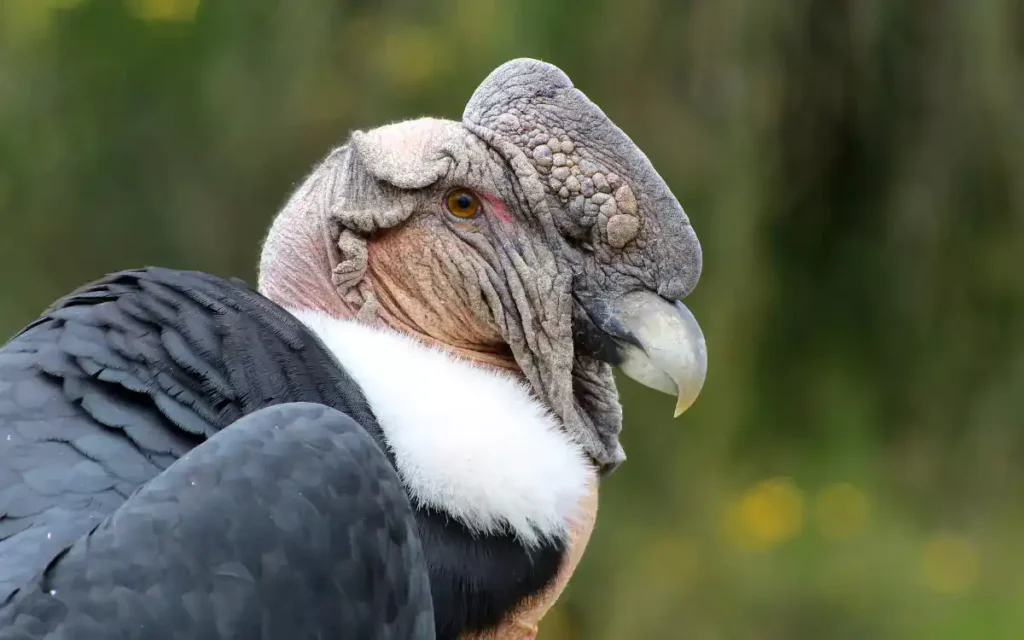
The Andean Condor, native to South America, is one of the largest flying birds with a wingspan of up to 320 cm.
Its bald, wrinkled head may seem unattractive, but it’s an adaptation to hygiene, preventing feather contamination when feeding on carrion.
Found in the Andes mountains and nearby coasts, this scavenger plays a critical ecological role. Its black plumage, contrasted with a white collar, makes it a striking, albeit eerie, figure in the sky.
- Latin name: Vultur gryphus
- Location to see: western South America
- Size: 30 pounds (15kg) wingspans (320 cm)
2.Kakapo
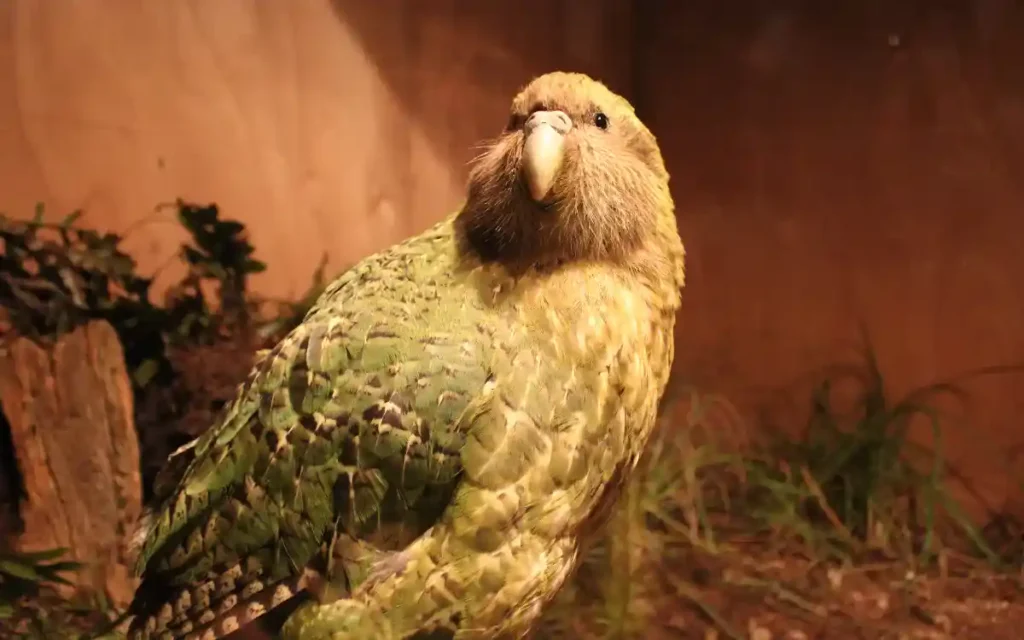
The Kakapo, also known as the owl parrot, is a nocturnal, flightless bird endemic to New Zealand. Its mossy green feathers, round face, and stocky build give it an unconventional charm.
The Kakapo is critically endangered, with fewer than 250 individuals remaining. Its quirky traits include a booming mating call and a peculiar waddling gait.
Despite its odd appearance, this herbivorous parrot has captivated conservationists and bird enthusiasts worldwide.
- Latin name: Strigops habroptilus
- Location to see: Fiordland
- Size: 58 to 64 cm (23 to 25 in) wingspan 82 cm (32 in)
3.Kiwi

The Kiwi is a flightless bird that’s become an icon of New Zealand. With shaggy brown feathers, a long beak, and nostrils at its tip, the Kiwi is built for nocturnal foraging.
Despite its awkward appearance, it’s a highly adapted insectivore.
Kiwis lay large eggs compared to their body size, which is an extraordinary evolutionary trait. These shy and elusive birds are a national treasure, symbolizing the unique biodiversity of New Zealand.
- Latin name: Apteryx
- Location to see: Kapiti Island
- Size: 5–8CM Length (2–3 inches)
4.Southern Screamer
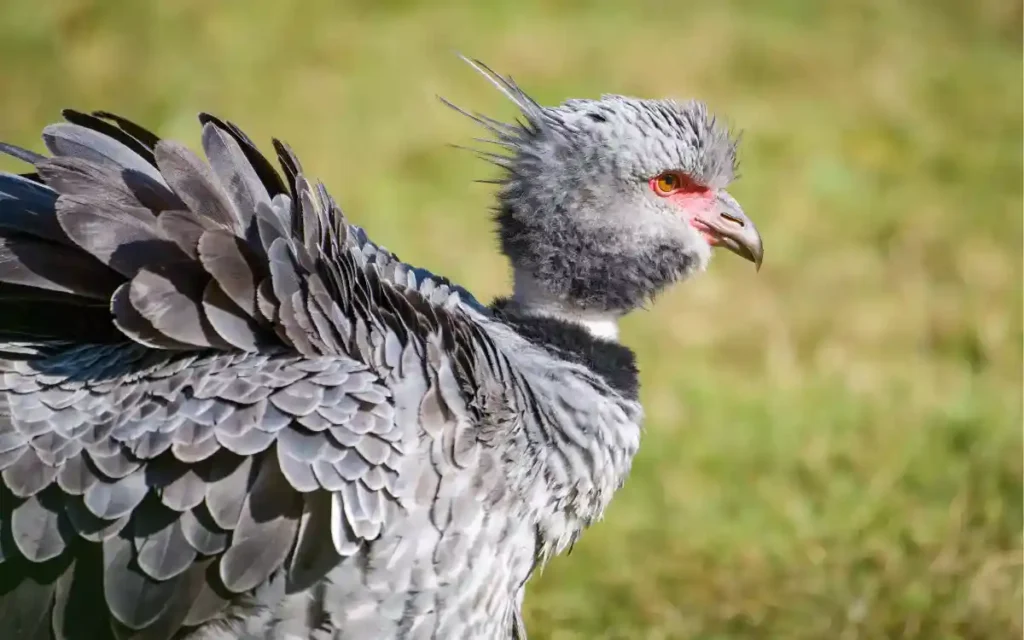
The Southern Screamer, native to South America, is a large waterfowl-like bird with grayish plumage and a bald neck.
ts piercing calls, audible from great distances, have earned it the nickname “Screamer.” Despite its ungainly appearance, it is an excellent swimmer and a strong flier.
The Southern Screamer’s unusual traits include a spiked crest and its loud, honking voice, which is often heard before the bird is seen.
- Latin name: Chauna torquata
- Location to see: Pantanal, Brazil
- Size: 83 to 90 cm weighing about 4.4 kg
5.Muscovy Duck
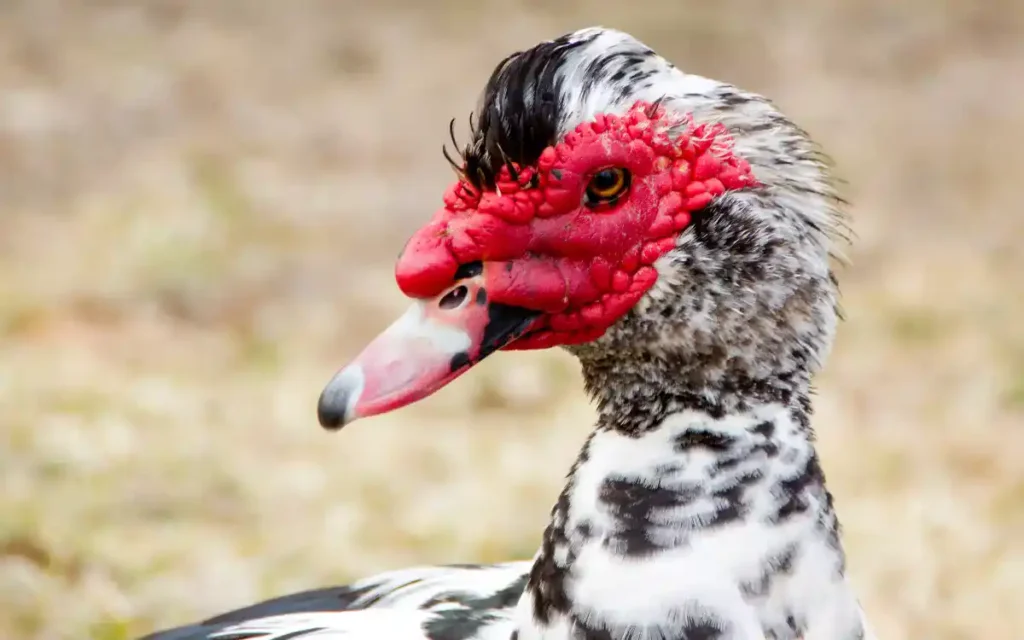
The Muscovy Duck is a domesticated bird with origins in South America, easily recognized by its red, warty face and black-and-white feathers.
These caruncles, or fleshy growths, might seem unattractive, but they serve as protection against parasites.
The Muscovy Duck is a hardy bird that thrives in various climates, from tropical wetlands to temperate regions. Its adaptability and distinctive appearance make it a popular choice in domestic and farm settings.
- Latin name: Cairina moschata
- Location to see: Americas, New Zealand, Australia, Europe
- Size: Length: 30 inches (76 cm): Weight: (Male) 10 to 15 pounds (4.53 to 7 kg)
6.Shoebill
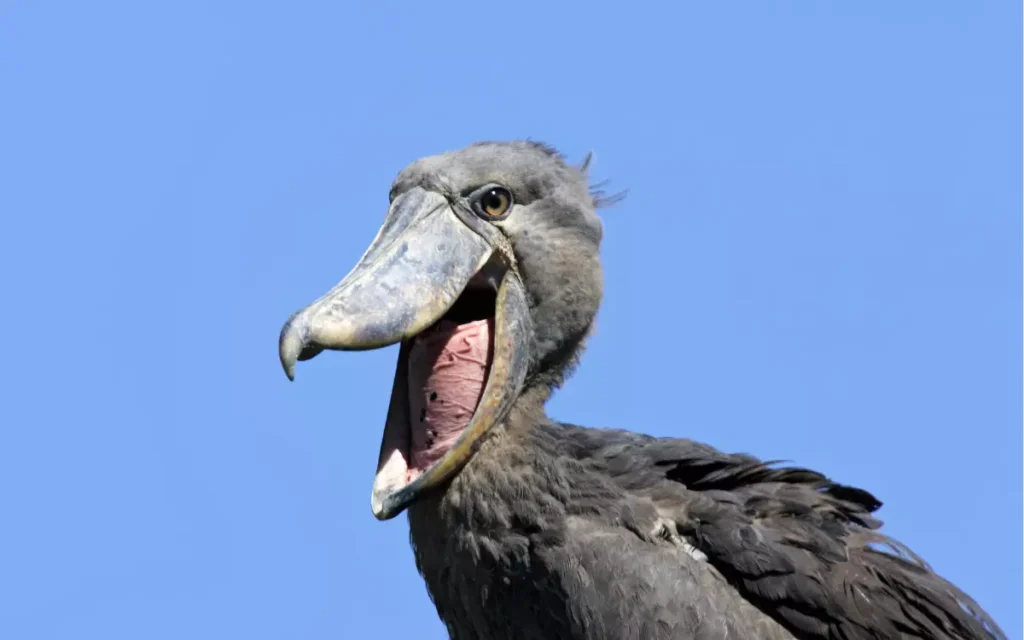
The Shoebill is a prehistoric-looking bird from tropical Africa, renowned for its massive, shoe-shaped bill. This bill, measuring up to 9 inches, is perfectly adapted for catching large prey like fish and amphibians.
Despite its menacing stare, the Shoebill is known for its stillness, often standing motionless for hours while hunting.
Its bluish-gray plumage and brooding expression add to its bizarre charm, making it a sought-after species for birdwatchers.
- Latin name: Balaeniceps rex
- Location to see: Uganda
- Size: 110 to 140 cm (43 to 55 in) wingspan 230 to 260 cm
7.Great Potoo
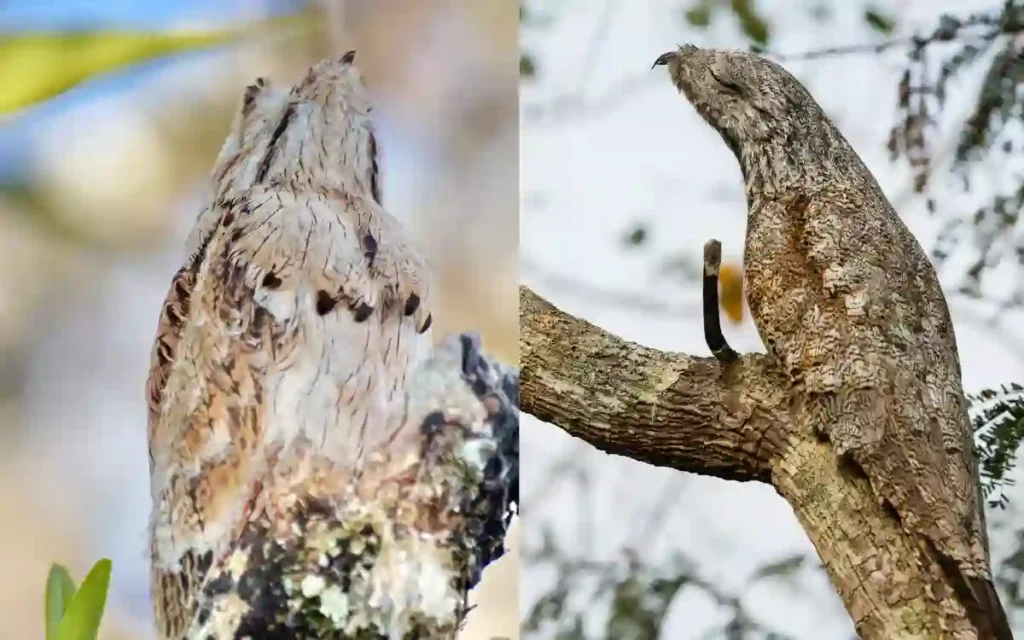
The Great Potoo is a nocturnal bird that blends seamlessly with tree bark due to its cryptic plumage. Found in Central and South America, it has an eerie wide-eyed stare that can feel unsettling in the dark.
The Great Potoo’s haunting calls echo through the night, adding to its mystique. This master of camouflage spends its days perched motionless, perfectly mimicking a tree stump to evade predators.
- Latin name: Nyctibius grandis
- Location to see: Southern Mexico to Northeastern Guatemala and most of Central America
- Size: 360 to 650 g (13 to 23 oz)
8.Marabou Stork
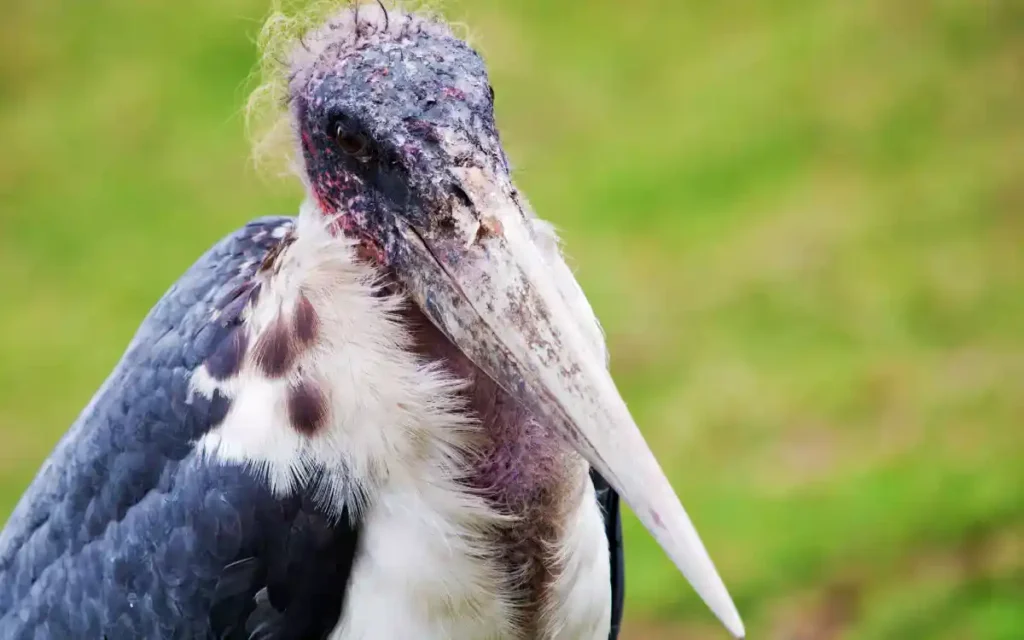
Often called the “Undertaker Bird,” the Marabou Stork has a bald head, wrinkled neck, and imposing stature.
Native to Africa, it is a scavenger often seen near carrion, earning it an eerie reputation. Its black and white plumage contrasts with its red, fleshy throat pouch, used in mating displays.
Despite its unattractive appearance, the Marabou Stork plays a vital role in ecosystems by cleaning up carcasses.
- Latin name: Leptoptilos crumenifer
- Location to see: Africa, from the Sahara desert to South Africa
- Size: 150 cm (5 feet) wingspread 2.6 m (8 1/2 feet)
Read also: 19 Most Interesting Birds in the World
9.Northern Bald Ibis
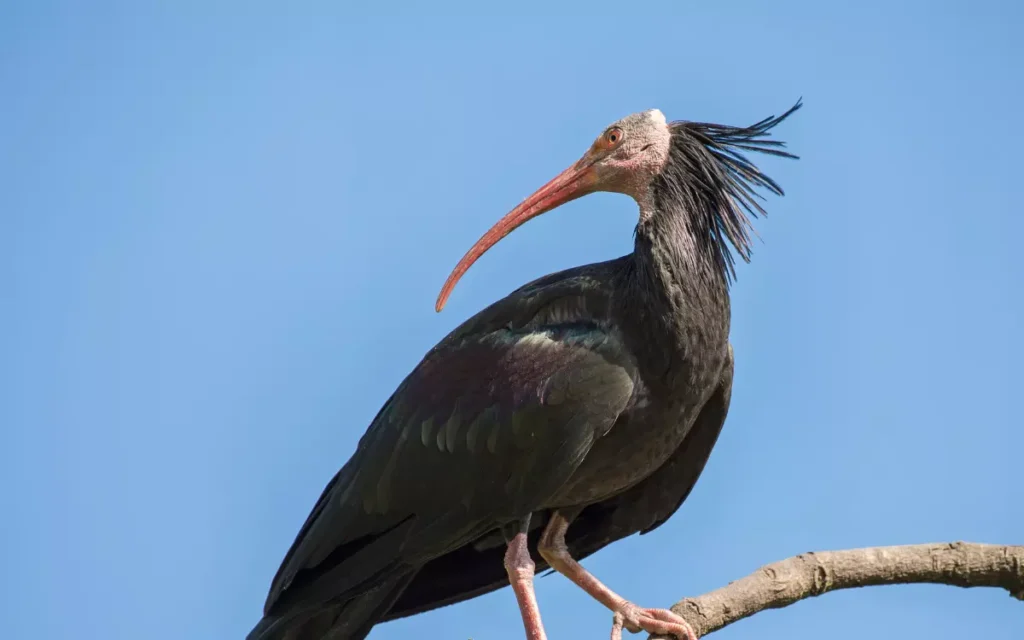
The Northern Bald Ibis is a critically endangered bird with a bald, wrinkled head and iridescent black plumage.
Its long, curved red bill is ideal for probing into soil for insects.
Historically found across Europe, it now survives in small populations in North Africa and the Middle East. Conservation efforts are crucial to protecting this unique species from extinction.
- Latin name: Geronticus eremita
- Location to see: European Alps, Northern Africa, and the Middle East
- Size: 70–80 cm (28–31 in) wingspan 1.0–1.3 kg (35–46 oz)
10.Naked Neck Chickens
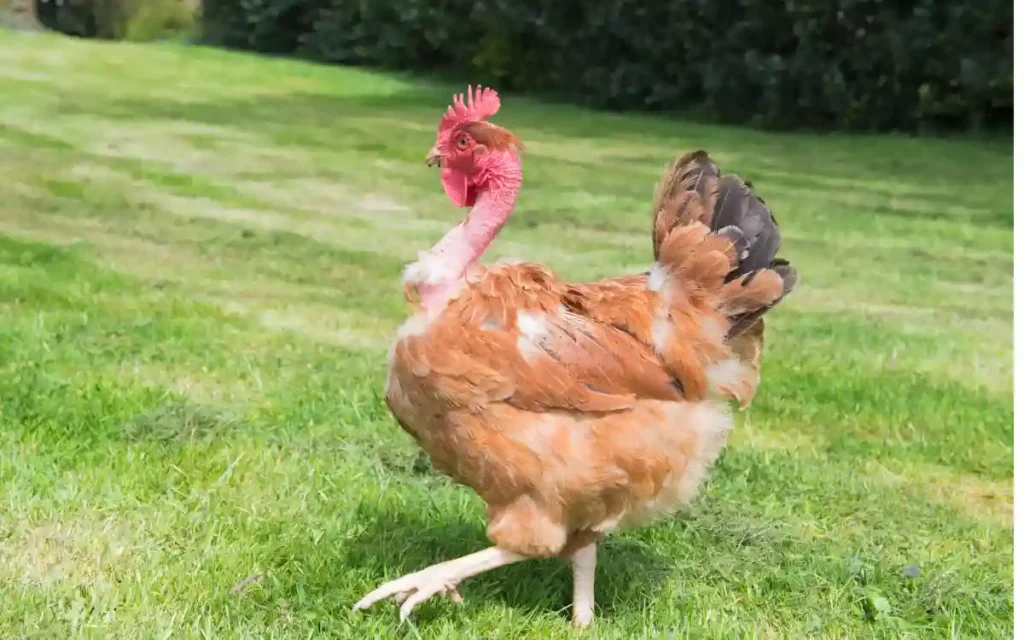
The Naked Neck Chicken, aptly named for its featherless neck, is a domesticated bird bred for hot climates.
While its exposed skin may look odd, this feature helps regulate body temperature in warm regions.
Available in various colors, these chickens are prized for their hardiness and adaptability.
Though not the prettiest fowl, their utility makes them popular among farmers worldwide.
- Latin name: Gallus gallus domesticus
- Location to see: Europe and the Middle East
- Size: 2 to 2.5 feet tall
11.Helmeted Hornbill
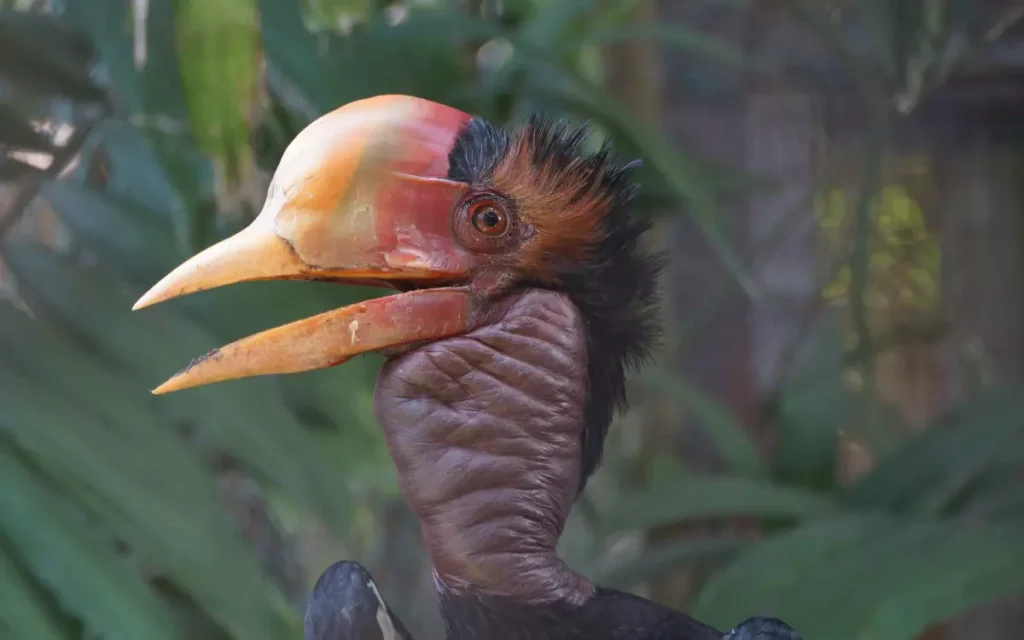
The Helmeted Hornbill is a striking bird from Southeast Asia, known for its large casque made of solid keratin.
This casque, used in territorial battles, gives the bird its unusual appearance. Its black plumage and long tail feathers add to its distinctive look.
Sadly, the Helmeted Hornbill is critically endangered due to poaching for its casque, often used in traditional carvings.
- Latin name: Rhinoplax vigil
- Location to see: Myanmar, southern Thailand, Malaysia
- Size: 110–120 cm (43–47 in)
12.King Vulture

The King Vulture, found in Central and South America, is a scavenger with colorful plumage and a bald head.
Its bright orange, yellow, and red facial features make it both striking and eerie.
This bird plays an important ecological role by cleaning up animal carcasses. Despite its intimidating appearance, the King Vulture is a shy and solitary bird in the wild.
- Latin name: Sarcoramphus papa
- Location to see: Central and South America
- Size: 2.5 feet (0.8 meters)
13.Capuchinbird

The Capuchinbird is a large bird with brown plumage and a distinctive bald patch on its head.
Found in South America’s tropical forests, it has a unique, low-pitched call that resembles a cow’s moo.
Its somber expression and bare head make it one of the most unusual-looking birds.
Despite its odd appearance, it’s highly sought after by birdwatchers for its rare and elusive nature.
- Latin name: Perissocephalus tricolor
- Location to see: north-eastern South America
- Size: males reach around 14 inches (35.5 cm) female 13.5 inches (34.5 cm)
14.Turkey
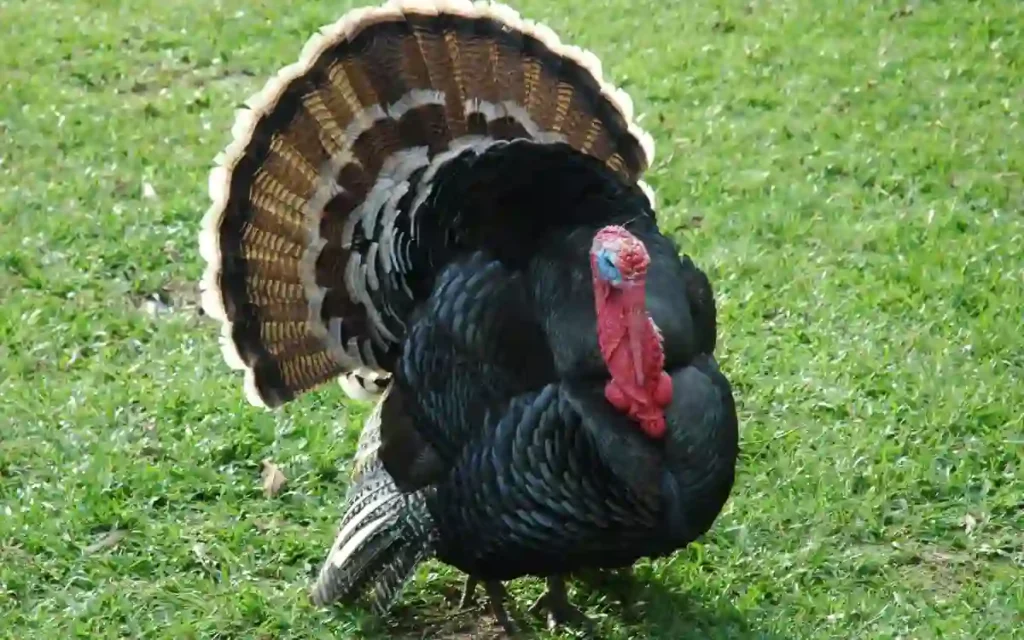
Turkeys are often associated with festive feasts, but wild turkeys, like the Turkey Vulture, have a more unconventional look.
Their bald, red heads and wrinkled necks, combined with their scavenging habits, contribute to their “ugly” reputation.
Despite this, turkeys are resourceful birds and play a key role in ecosystems by consuming carrion and insects.
- Latin name: Meleagris
- Location to see: North America
- Size: 5 to 11 kg (11 to 24 lb)
15.Long Wattled Umbrellabird

The Long Wattled Umbrellabird is a striking black bird with a long, pendulous wattle extending from its throat.
Found in Central and South America, it uses this wattle during courtship displays.
Its somber expression and unusual features make it stand out in the avian world. This rare bird is a fascinating sight for birdwatchers.
- Latin name: Cephalopterus penduliger
- Location to see: Pacific slope,Colombia to southwestern Ecuador
- Size: 40–42 cm in height female 35–37 cm
16.Philippine Eagle

The Philippine Eagle, also called the “Monkey-Eating Eagle,” is one of the largest and most powerful eagles in the world.
Its fierce expression, large hooked beak, and shaggy crest give it a formidable appearance.
This critically endangered bird is a symbol of conservation efforts in the Philippines, with its population declining due to habitat loss.
- Latin name: Pithecophaga jefferyi
- Location to see: eastern Luzon, Samar, Leyte, and Mindanao
- Size: 86–102 cm (2 ft 10 in – 3 ft 4 in) in total length
17.Harpy Eagle

The Harpy Eagle is a powerful predator with a striking appearance. Its large size, strong talons, and piercing eyes make it look intimidating.
Found in the tropical rainforests of Central and South America, this eagle is a symbol of strength.
Its shaggy crest and somber expression, however, contribute to its unconventional beauty.
- Latin name: Harpia harpyja
- Location to see: Brazil, Ecuador, Guyana, Suriname, French Guiana, Colombia, Venezuela, Bolivia, Paraguay, Peru and ortheast Argentina.
- Size: 36 to 40 inches
18.Frogmouth
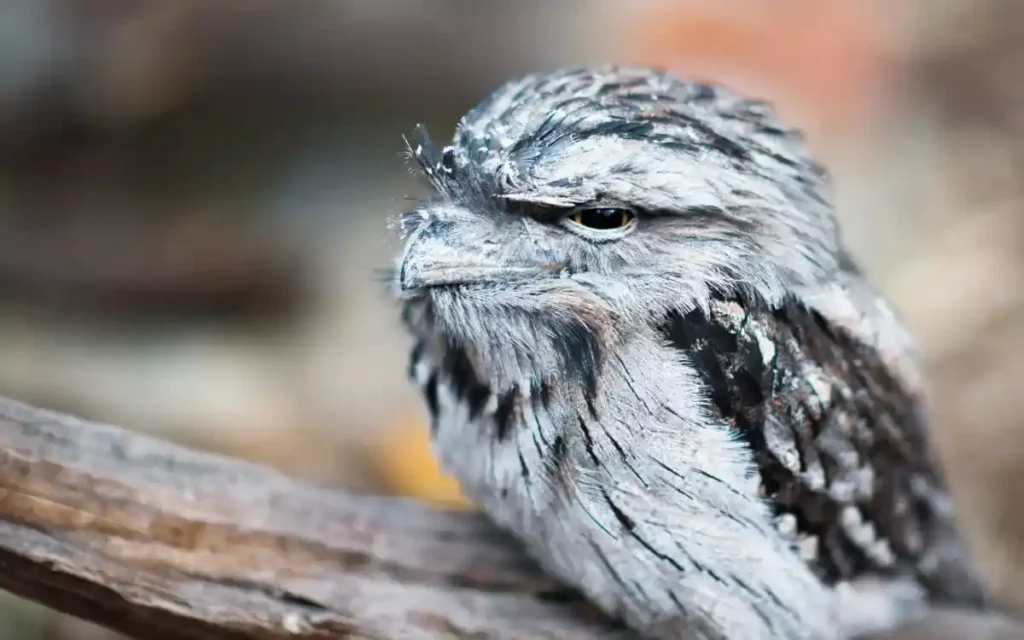
The Frogmouth, found in Asia and Australia, is a nocturnal bird with a broad, gaping mouth.
Its cryptic plumage allows it to blend perfectly with tree branches during the day.
Despite its wide-mouthed appearance, the Frogmouth is a skilled insect hunter. Its eerie, camouflaged look often makes it difficult to spot in the wild.
- Latin name: Podargidae
- Location to see: tropical Asia
- Size: 10 to 22 inches (25 to 55 cm)
19.Vultures
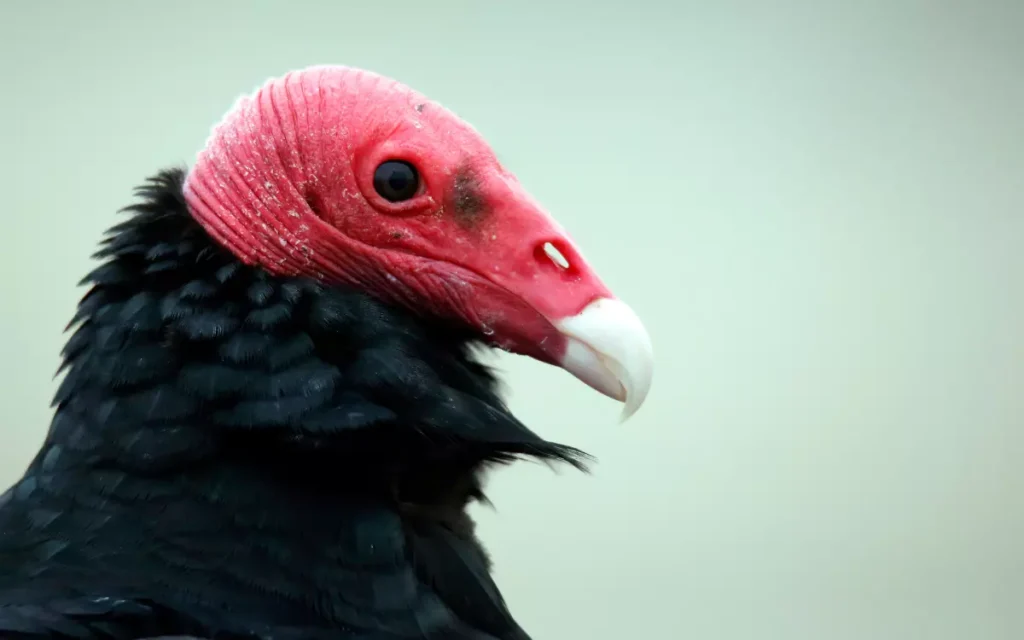
Vultures are nature’s cleanup crew, known for their bald heads and necks, which help them stay clean while feeding on carrion.
Despite their unattractive appearance, vultures play a crucial ecological role by preventing the spread of disease.
Found across the world, these scavengers are vital to maintaining healthy ecosystems.
- Latin name: Gyps indicus
- Location to see: Ramanagara district, Karnataka, India
- Size: 1 metre (3.3 feet) tall, with a 2.7-metre (8.9-foot) wingspan
20.Hornbills
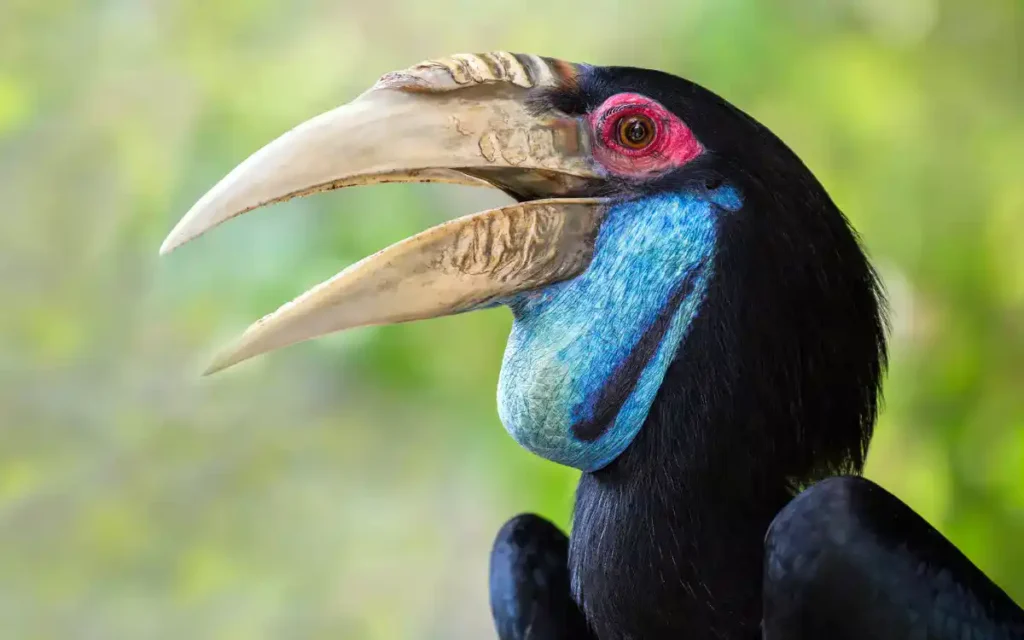
Hornbills are characterized by their large, curved bills and striking plumage. While many species are visually stunning, their oversized beaks and solemn expressions give some a more unconventional look.
The casque on their bill, used in displays and battles, adds to their unique appearance.
They are found in tropical regions and are vital for seed dispersal in forests.
- Latin name: Bucerotidae
- Location to see: Dandeli in Karnataka
- Size: 40 cm (16 inches), in the smaller Tockus species, to 160 cm (63 inches)
21.Hoatzin
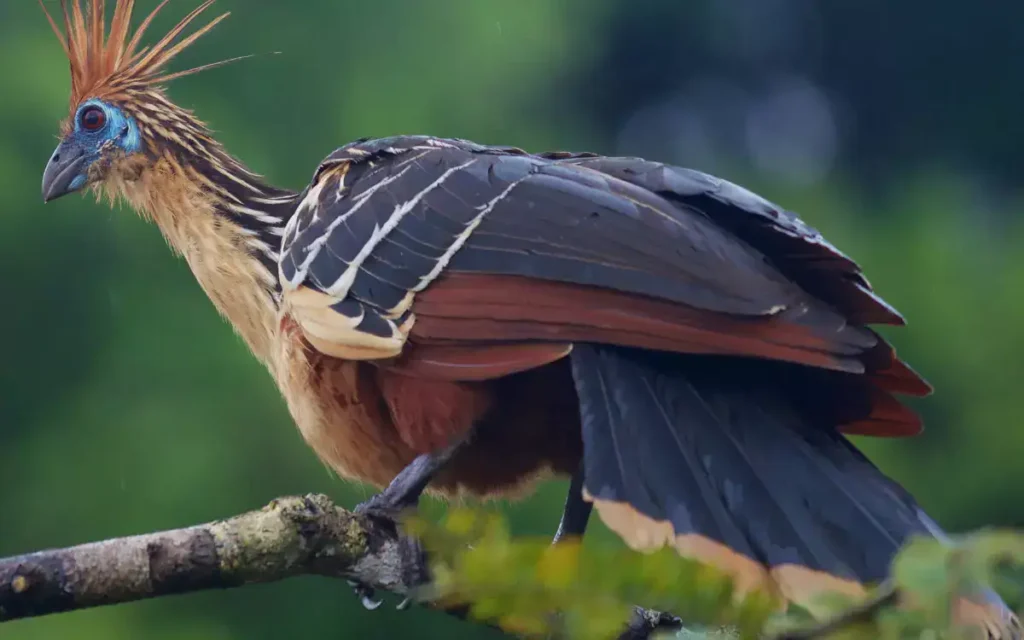
The Hoatzin, often called the “Stinkbird,” is a peculiar bird native to South America’s swamps and mangroves. Its spiky crest, clawed wings, and prehistoric appearance make it look like a relic from the past.
The Hoatzin is unique among birds for its ruminant-like digestive system, allowing it to ferment vegetation.
- Latin name: Ophisthocomus hoazin
- Location to see: swamps, riparian forests, and mangroves of the Amazon
- Size: 65 cm (25.6 inches)
22.Potoo
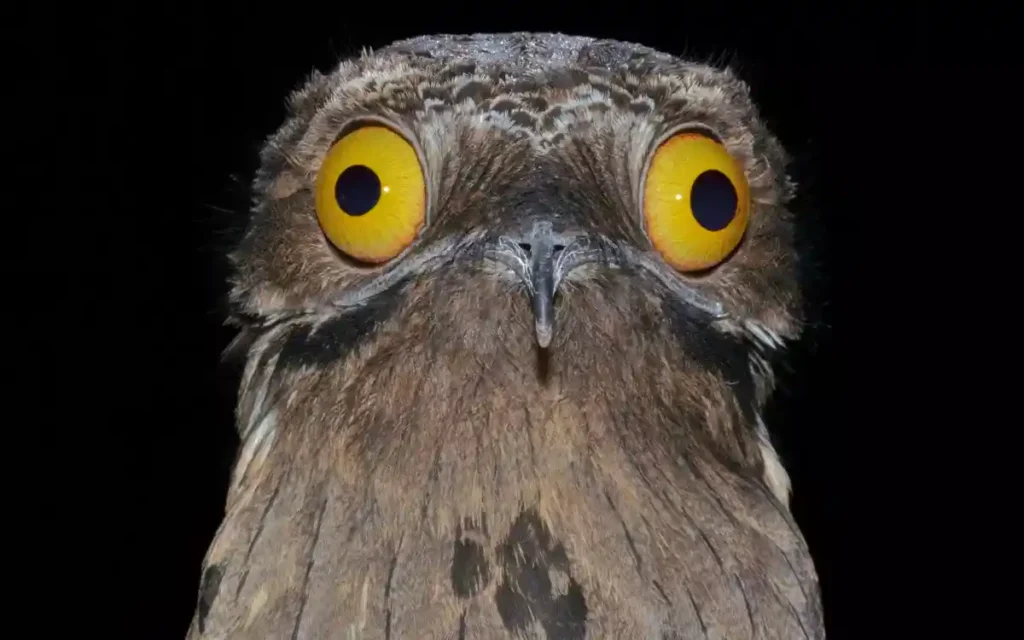
Potoos are nocturnal birds found in Central and South America, known for their wide eyes and haunting calls.
Their cryptic plumage resembles tree bark, making them masters of disguise.
During the day, they perch motionless, blending seamlessly with their surroundings. Potoos are fascinating for their eerie appearance and elusive behavior.
- Latin name: Ophisthocomus hoazin
- Location to see: central South America
- Size: 21–58 cm (8.3–22.8 in)
23.Featherless Chickens
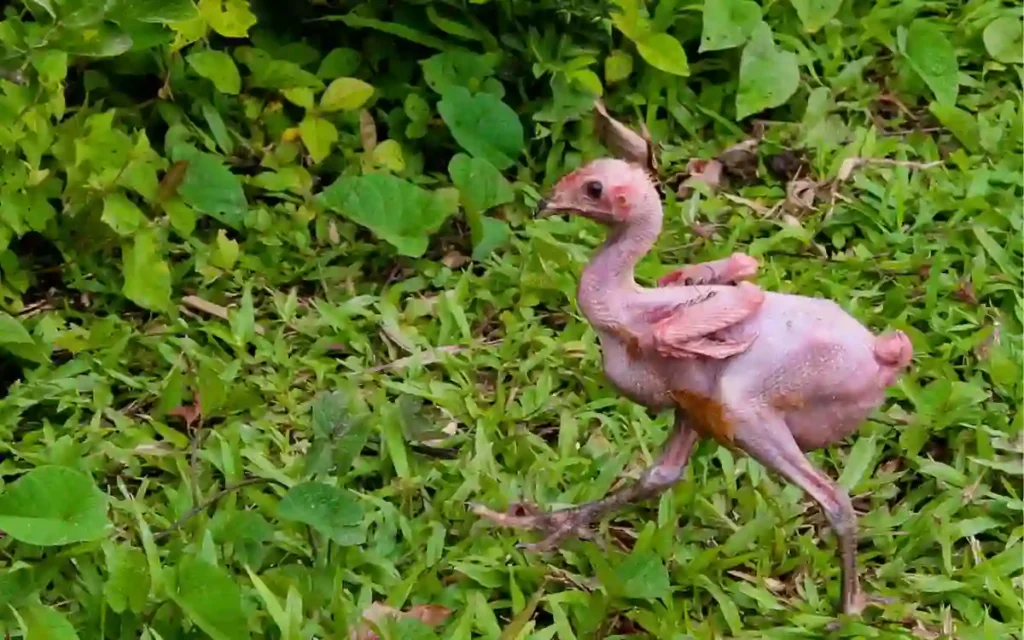
Credit: Bill Bumgarner
Featherless Chickens, also known as Naked Neck Chickens, are domesticated birds bred for their heat tolerance.
Their exposed skin, which helps regulate temperature, may not be visually appealing but is a functional adaptation.
These birds are a popular choice in agricultural settings due to their resilience and high productivity.
- Latin name: Unknown
- Location to see: ISRAEL
- Size: Hen (6.5lb) and Rooster (8.5lb)
24.Indian Grey Hornbill
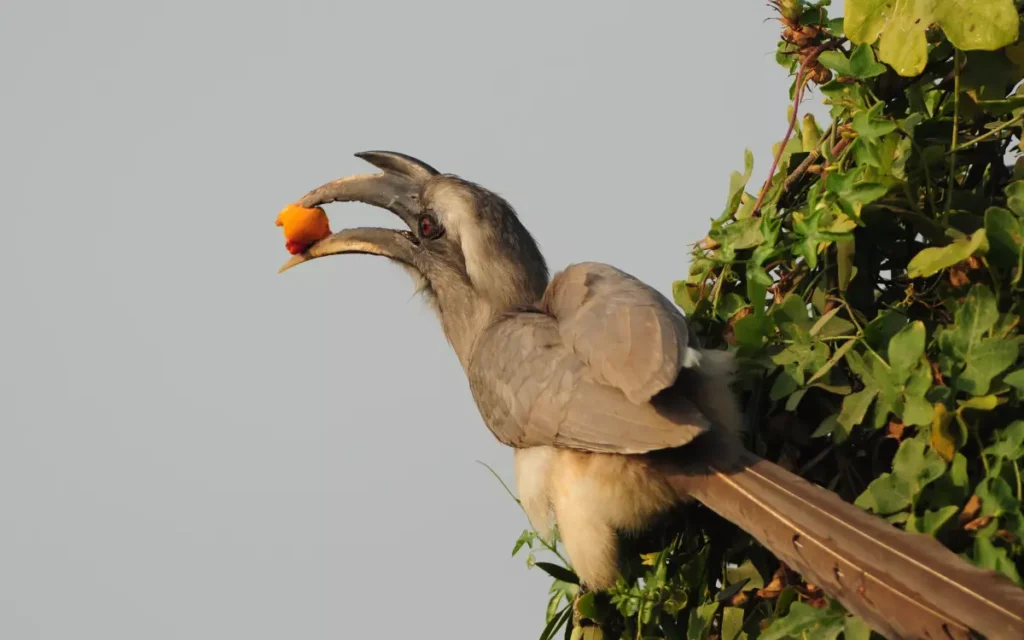
The Indian Grey Hornbill is a medium-sized bird with a distinctive curved bill and a muted gray-brown plumage.
Its casque and solemn expression make it look slightly awkward compared to its colorful relatives.
Found in the Indian subcontinent, this bird is an important seed disperser in forests and plays a vital ecological role.
- Latin name: Ocyceros birostris
- Location to see: Himalayas southwards
- Size: 61 cm (24 in) in length
25.CALIFORNIA CONDOR

The California Condor is one of the rarest birds in the world, with a striking bald head and black feathers.
Its enormous wingspan allows it to soar effortlessly for hours.
Critically endangered, this bird symbolizes conservation success stories, with efforts helping its population recover. Despite its odd appearance, it’s a majestic presence in the skies.
- Latin name: Gymnogyps californianus
- Location to see: Andrew Molera State Park; Bottcher’s Gap; Julia Pfeiffer Burns State Park; Pfeiffer Big Sur State Park; and Big Sur Lodge
- Size: 1.2 metres (4 feet) long
FAQs
Why are some birds considered “ugly”?
Beauty is subjective, and what some may see as unattractive traits, like bald heads or large beaks, are often evolutionary adaptations. For example, a bald head helps scavengers like vultures stay clean when feeding on carrion.
Are these “ugly” birds endangered?
Yes, several birds on this list, such as the California Condor, Kakapo, and Philippine Eagle, are critically endangered due to habitat loss, hunting, or other human activities. Conservation efforts are ongoing to protect them.
What ecological roles do these birds play?
Many of these birds play vital roles in ecosystems. Scavengers like vultures and condors help clean up dead animals, while birds like hornbills and hoatzins assist in seed dispersal and vegetation growth.
Can these birds be kept as pets?
Most of these birds are protected species and cannot be kept as pets. Additionally, many of them require specific habitats and diets, making them unsuitable for domestic environments.
Are these birds really “ugly,” or are they misunderstood?
While some may find their appearances unconventional, these birds are unique and fascinating in their own ways. Their traits often have evolutionary purposes, and they contribute significantly to the biodiversity of the planet. Beauty, after all, lies in the eye of the beholder.
Conclusion
In the world of birds, beauty comes in all shapes and sizes. While some avian species may not be conventionally attractive, they each have their unique adaptations and features that make them fascinating and essential members of the natural world. Embracing the diversity of birdlife reminds us that beauty is truly in the eye of the beholder.


